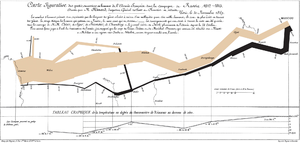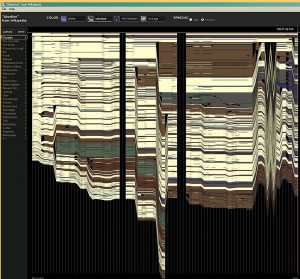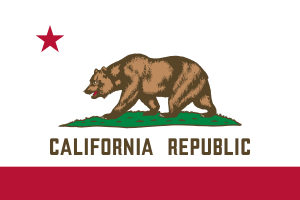
Trust in your calling, make sure your calling’s true
Think of others, the others think of you
Silly rule golden words make, practice, practice makes perfect
Perfect is a fault and fault lines change
I believe, my humor’s wearing thin
And change is what I believe in
“I Believe” by R.E.M.
These are some words from a song I listened to on repeat in high school. When I listen to it now, I hear some irony in the lyrics that I don’t remember hearing before. We get handed so many rules in our lives. When we are younger, many of us are taught about different creeds and rules at our parent’s chosen place of worship. When we begin our professional lives, we might encounter mission statements at work or within our professional network. What do we with all of these?
For this credo post, I’m examining some of the manifestos, mission statements and declarations I’ve learned from and used in my life. Some of them are historical, some are from jobs and some are from teh tubez.
Do unto others as you would have them do unto you.
This rule sets the bar for my behavior in all aspects of life. It just doesn’t get any more basic than this. When someone treats me like crap, this rule is what pulls me back and helps me center myself. It also leads me to the second rule in life.
An eye for an eye, a tooth for a tooth…
The reason why I’m including this is because it’s an example of how not to treat people and a code that I learned about and decided to toss out. If someone screams at me, this doesn’t give me the right to scream back and only makes a bad situation worse. I think that the Code of Hammurabi is, in actuality, a great way to escalate a situation from bad to worse. As the saying goes, “if we all followed the Code of Hammurabi, the world would be toothless and blind.”
The Declaration of Independence:
This one may come as a surprise, but if you take time to read it, I think you’ll see why I’ve included it here. It was written 236 years ago, but people then had many of the same basic wants that we have today and at work, even.
Here’s my favorite bit, “We hold these truths to be self-evident, that all men are created equal, that they are endowed by their Creator with certain unalienable Rights, that among these are Life, Liberty and the pursuit of Happiness…That whenever any Form of Government becomes destructive of these ends, it is the Right of the People to alter or to abolish it.”
This is all about personal empowerment. The people who wrote this were far from perfect, but they made quite a strong and enduring statement here. Not only is it ok to want liberty and happiness in your life, but it is your right as a human. This is strong stuff. If the government is crushing your liberty and path to happiness, it is your right to change it.
It’s very easy for life to drag you down and tell you that you should be content with having a roof over your head, a flush toilet in the bathroom and decent beer in the fridge, but this document suggests that there is way more to it than that. We have a right to find happiness and contentment in everyday life. This includes our jobs even if they are in the tech industry. In software today, we’re often expected to work crazy hours for a release or do our best to work with programmers who are brilliant assholes because their code is so fantastic. I don’t think so. It violates our right to happiness and ultimately creates software that is harder to maintain.
But that’s not the end of it. There’s also an implication in the Declaration of Independence that if your rights are being violated, it’s on YOU to do something about it. For this reason, if I see shitty software practices, I tend to stir the pot. In some places it’s welcome. In other places, it’s not welcome. In the places where it’s not welcome, I know I’m not welcome either. These truths I hold to be self-evident.
We are uncovering better ways of developing
software by doing it and helping others do it.
Through this work we have come to value:
Individuals and interactions over processes and tools
Working software over comprehensive documentation
Customer collaboration over contract negotiation
Responding to change over following a plan
That is, while there is value in the items on the right, we value the items on the left more.
There are several reasons why the Agile Manifesto is my “go-to” document when it comes to software and also when it comes to framing my own credo.
- It is short and memorable, especially “Individuals and interactions over processes and tools.” If someone asks me what’s in the Agile Manifesto, I don’t necessarily have to look it up. When I look at the list of people involved and then see how boiled down this Manifesto is, I know that there must have been some very interesting conversations about what to include and what to leave out. That fact that the people involved were able to come up with something that is at once concise yet filled with meaning is quite an accomplishment.
- Instead of talking “beliefs” this is a statement of “values.” I noticed that the Software Craftsmanship manifesto which seems to be sprung from the Agile Manifesto is also a statement of values instead of beliefs. This gives both more flexibility because a belief seems more black-and-white but a “value” can happen on more of a sliding scale. My sliding scale of value in the Agile Manifesto might be different from yours. Maybe when you think of the Agile Manifesto, you think of “Working software over comprehensive documentation,” first. We can still share these values and it’s all good!
- The content squarely places emphasis on humans and their patterns of interaction as being important to the making of software.
Open Company, No Bullshit
Build with Heart and Balance
Don’t Fuck the Customer
Play, as a team
Be the Change You Seek
Although I no longer work at Atlassian, their core values still resonate strongly with me. As is the case with the Agile Manifesto, they are succinct, memorable and from the heart.
I especially like that they included “play as a team.” The team work ethic I experienced at Atlassian was magnificent and has now set a high expectation of teamwork for me. Maybe it’s just my personal stereotype, but I noticed collaboration and teamwork seems to be an understood commodity in Australia more so than in the United States and especially Silicon Valley (Note: I differentiate Silicon Valley from San Francisco). Although I hear that Silicon Valley is what it is today because it had an open culture in the early days of tech, I’ve seen enough exclusivity and competitiveness in valley culture, that I’m convinced it needs a few lessons on collaboration and “building with heart and balance.”
These core values remain one of Atlassian’s competitive advantages, and if they stick with these, I’m sure their established freight-train of success will continue.
Thus concludes my look at manifestos, values and mission statements. I’ve been writing down my beliefs and have seen the list grow week over week. It looks like there will be “value” in distilling them down to something short and memorable. Although a credo is supposedly a statement of beliefs, writing them as values gives them more flexibility so I plan to reframe some of the belief statements I’ve made as statements about what I value. There are more than a few of my belief statements centered around humanity in software, but I might also have a think about the heart of software.

















